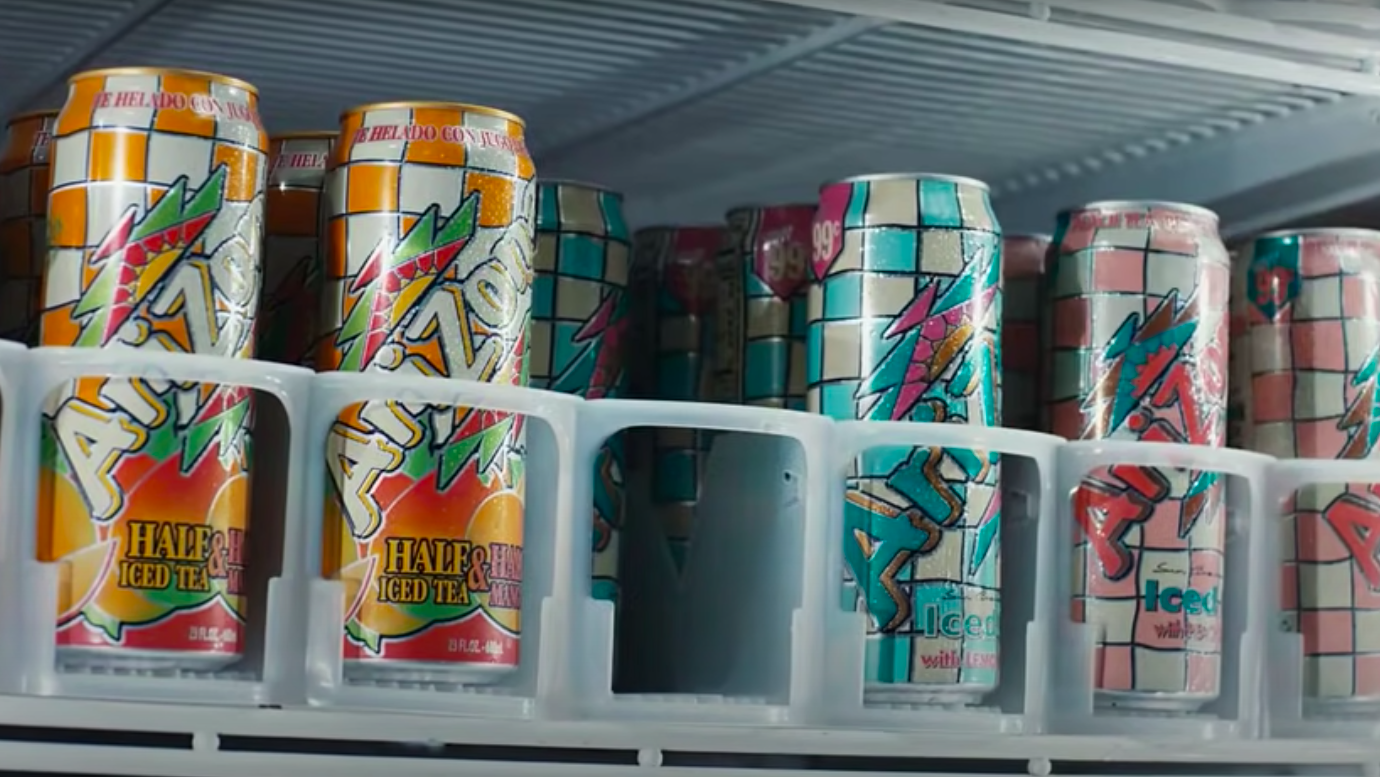Every Drink Brand Should Follow AriZona's Lead
The beverage giant has kept its prices steady for 30 years—and other companies should adopt its tactics.
I spent a good chunk of my childhood shuffling in and out of my local White Hen Pantry convenience store, picking out treats after swim lessons or cavity-free dentist appointments. The choice was always obvious: AriZona Iced Tea. It was larger than anything else in the beverage case—23 whopping ounces!—emblazoned with Trapper Keeper-esque colors and shapes, and my mom drank it, so it seemed instantly more healthy (it wasn't) and sophisticated (it was) than the puny soft drinks that stood beside it. Most importantly, though, it cost 99 cents a can, leaving enough change in my two-dollar allotment to tack on a bag of Swedish Fish. Now, 30 years later, when so much has changed, those cans still cost 99 cents. In the midst of historic inflation, how is this consistency even possible?
A recent Los Angeles Times article dives deep on the economics of AriZona Iced Tea, which has held fast to the promise on its Big AZ Can for decades. Don Vultaggio, founder of the still independent beverage company he runs with his two sons, explains the various factors that have allowed the brand to stay the course.
How does AriZona Iced Tea stay so cheap?
"I don't want to do what the bread guys and the gas guys and everybody else are doing," Vultaggio told the Times, in reference to inflation-driven price hikes. "Consumers don't need another price increase from a guy like me."
That's a great sound bite to have to your name, and I'll certainly never say no to a billionaire who expresses empathy for the average consumer. But still, with a 1992 dollar now worth $2.05, and with aluminum, corn syrup, and shipping all much more expensive than they used to be, how does the math work out on a 99-cent can? Vultaggio explains all sorts of tactics, such as strategic plant locations, a diversified product line that includes hard seltzer, and a streamlined can that uses less aluminum than it used to. But there's one strategy that stands out above all the rest: no flashy marketing.
It's an approach that all major beverage brands should adopt ASAP.
AriZona marketing is all in the can
"Most brands in America today believe they have to go out and have a Super Bowl commercial or do traditional advertising," Vultaggio tells the Times. "When we first started, I didn't have the money for that—so each can had to be like a billboard. That's why I chose the big can. It stood tall."
We take for granted that AriZona's 23-ounce can is immediately recognizable in the fridge case at the convenience store, but that's actually pretty amazing when you consider that we don't see celeb-studded ad campaigns and over-the-top augmented reality promotions that remind us of AriZona's existence every second of the day, the way we do with Coca-Cola and Pepsi. Brand recognition has come by way of consistency, trust, and affordability—and, in turn, the money saved on ostentatious marketing gimmicks lets the company continue selling the product at the price we've come to expect.
I know I'm just parroting an old Onion joke at this point, but can you even imagine what the world would look like if other beverage brands followed AriZona's example? If, instead of pummeling us with ill-advised TV spots and convoluted nostalgia grabs, these companies put faith in the brand equity they've built for over a century—to say nothing of the free advertising that hypebeast culture has afforded them—and just... coast for a little while? Wouldn't you be curious to see what the world looks like when our relationship to a drink is defined primarily by the fact that we enjoy drinking it? It's hard to imagine, I know—but no more impossible than, say, a beverage billionaire whose company retains customers by choosing not to gouge them. Dream big.
